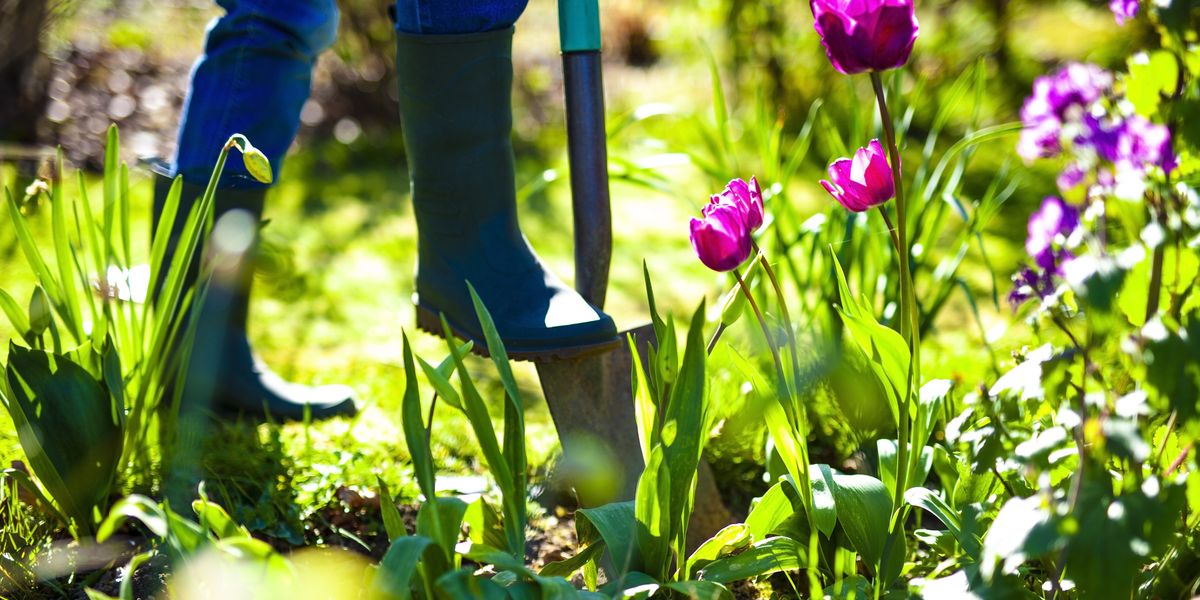
4 WAYS TO BRING BEES TO YOUR GARDEN, INCLUDING THE COLOURS THEY LOVE
When was the last time you heard the familiar buzz of a bee in your garden? It’s one of the happiest sounds of summer and bees play an important role in nature, too. By pollinating plants and crops, their existence is vital for the food we eat.
But the humble bee is facing many threats – from the impact of climate change to the use of toxic pesticides in gardens and habitat loss. A combination of these factors mean that bees are facing an uncertain future, with nearly one in 10 of Europe’s wild bee species facing extinction.
The good news is there's plenty of action we can take to make our own gardens bee-friendly – from creating bug hotels to even making prettier paint choices.
Wondering where to begin?
Read on to discover quick hacks for a bee-friendly garden, plus colour advice from Marianne Shillingford, Creative Director at Cuprinol and expert tips from beekeeper and founder of pollinator protection initiative Bee1, Mark Douglas, who has partnered with outdoor paint brand, Cuprinol Garden Shades to raise awareness of the declining bee population and how we can help.
Let your garden grow!
Giving your lawnmower a break every so often will not only take a job off your to-do list this summer, but it's also better for bees – a win-win!
While shorter grass does give bees easier access to any lawn flowers, research has also found that mowing grass less frequently is ideal, as it offers a prime landscape for a large bee population. Put simply, the grass shouldn't be too short or too long – Mark suggests mowing your lawn every two weeks for the perfect balance, and thinking twice before weeding.
“Dandelions are of particular interest to bees as a big source of nectar, especially in urban areas where their other food options are increasingly sparse,” he says. “Our Bee1 Bee Bombs, contain 32 wildflower seeds, soil and clay – just scatter on the ground and watch your wildflower meadow grow. By recreating these wildflower meadows we can make an important contribution to the biodiversity of Great Britain.”
Plant the rainbow
Bee-friendly plants such as pussywillow, lavender, abelia, honeysuckle and ivy provide a tasty meal of the pollinator’s favourite ingredients: nectar and pollen. Bumblebees tend to focus on one plant species at a time, so keeping your flowers grouped together in chunks is an easy way to help them out.
... and paint the rainbow, too!
Like us, research shows that bees are attracted to bright and beautiful colours. Marianne suggests filling our gardens with flowers aplenty, which is “a great way of welcoming natural plant and animal life into your outdoor space.”
As for your flowerbeds, borders and outdoor furnishings, a simple lick of paint can go a long way. Opt for shades which mirror colours we see in the natural world.
“Bees best perceive blues, green and violets, so decorating our wood, terracotta, brick and stone in Cuprinol Garden Shades colours such as Beach Blue, Emerald Stone, Seagrass and Purple Pansy is basically like inviting the bees to a disco in your garden,” says Marianne.
Create a bug hotel
This fun activity can do a world of good for bees and other critters in your garden. “Bees can tuck up in their holes from the time its laid as an egg, until its ready to fly out into the big wide world. They also make for ideal winter homes for solitary bees,” says Marianne, who suggests making your wooden hotels instantly more recognisable to pollinators with bright pops of colours.
“Please ensure that any hives, bug hotels, or alternative bug residencies are painted on the outside and fully dried before giving access to bugs for use. Do not paint if these objects are already in use by bugs,” she adds.
Bees can become lethargic and tired in hot, dry weather. So, to upgrade your hotel into an all-inclusive, keep a small amount of fresh water in a shallow saucer nearby, to help bees stay refreshed and cool in warmer weather.
Become a Bee First Aider
Inspired to help bees beyond the borders of your garden? The answer is at the touch of a button.
Mark suggests downloading apps such as Spot-A-Bee, which helps users achieve “a better understanding of the environments bees like – this app allows you to observe and document any flowers, shrubs, climbers or trees and the bees on them, and contains useful information on such plants and the most common bee species in the UK.”
As for exhausted and hungry bees spotted in the wild, Mark recommends treating them with a mixture of sugar and water on a teaspoon.
“With their natural food sources gradually more difficult to come by, this simple solution can work wonders for bees in need of an energy fix,” he adds.
2024-06-06T11:47:45Z dg43tfdfdgfd